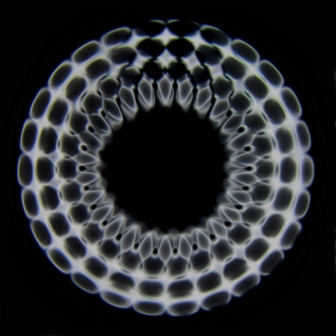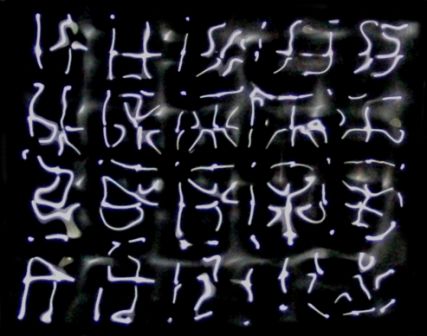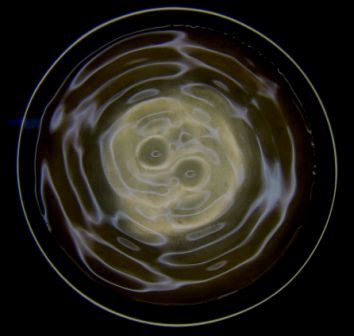1) Create an idea for a sound piece and execute it. Tools for recording: Quicktime, Garageband (among others). Tools for Editing: Audacity. Tools for Uploading/Hosting: Soundcloud.
make a collage of different sounds I hear everyday?!
-record different sounds
-transfer the files to a computer
-edit
-save
make the sound visual using the Cymatics?
hear a sound recorded from the public space (ex. Central Park, subway, etc), imagine what is going on, and draw/paint the imagined scene
hear a sound recorded from the public space (ex. Central Park, subway, etc), imagine what is going on, and draw/paint the imagined scene
2) Research one artist who works creatively with sound; describe in which way s/he does that.
Kenichi Kanazawa
Kenichi Kanazawa uses a simple rubber mallet to create specific patterns out of grains of sand. Kanazawa uses a scientific "sound-visualizing process" called Cymatics to create the detailed patterns. And to make the spectacle even stranger, the shapes shift in response to enhanced pitch: The higher the frequency, the more complex the patterns that emerge.
The process goes all the way back to the 1600's, when Galileo Galilei was one of the first person to formally recognize that oscillating sounds could create patterns. In his "Dialogue Concerning the Two Chief World Systems," Galileo wrote:
"As I was scraping a brass plate with a sharp iron chisel in order to remove some spots from it and was running the chisel rather rapidly over it, I once or twice, during many strokes, heard the plate emit a rather strong and clear whistling sound: on looking at the plate more carefully, I noticed a long row of fine streaks parallel and equidistant from one another. Scraping with the chisel over and over again, I noticed that it was only when the plate emitted this hissing noise that any marks were left upon it; when the scraping was not accompanied by this sibilant note there was not the least trace of such marks."
Danny Becher
Born 1953 in Braunschweig, germany, Danny Becher is another artist who was much inspired by Galileo Galilei. Below you find a few photos of his experiments Becher did with sound resonance in water. By generating specific frequencies and/or my music and transmitting these vibrations into water, the surface of the water is set into resonance and creates various images from symmetrical structures to irregular patterns.
3) Think back of our discussion about sound in class. What were your thoughts? What could you take away from it?
-pretty clear when looking at the class note I took on November 20th.
-sound is just another material/means that we can use in art or simply connect people.
4) Come up with an interesting lesson plan for working with sound in a classroom, a brief outline is fine.
-Visualize the Sound: make a sand artwork using Cymatics
5) Work on your final projects and think about a way how you would like to present it (in our last class).
-Storytelling->theme
-Other->traditional media (printmaking, collage, painting/drawing, performance, sculture)
-Other->new media (audio, computer, scanner, video, photography)
Inspired by the "Physical Dialogue," I am thinking about drawing/painting over/next to/around a digital photograph taken by me so that the entire image would have a story.
-Other->traditional media (printmaking, collage, painting/drawing, performance, sculture)
-Other->new media (audio, computer, scanner, video, photography)



No comments:
Post a Comment